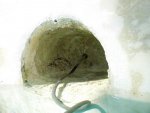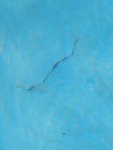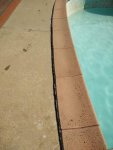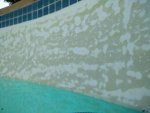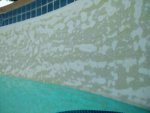Im pretty sure that is a Pentair Amerilite. (Formerly American Prodcuts Co which was bought by Pentairyears ago).
You dont need a stopper to plug the conduit. The Cable which comes with the light is designed to be permenantly underwater.
You will need a light switch, whether existing or new. You need a way to turn the light on and off. Most poeple put their lights on a timer, but that's totally optional. If you want a timer, get a Intermatic T104R at Lowes for about 60ish.
If you get a fixture with long enough cable (you can order them with incremental cable lengths), then you may not need a J-Box (check your local building code). Just run the light cable all the way continuously to the light switch.
If you order a fixture with a short cable, then you will need a J-Box and the wires from the J Box back to the switch must be Black, White and Green, THHN or THWN rated for 600V
If there is a grounding lug inside the light niche, then along with the light cable, include a green ground wire and connect the ground wire to the lug, and yes, protect it generously with potting compound. The green wire must be type THHN or THWN rated for 600V. 12 AWG will be fine.
If you have to deal with the niche bonding, the bond wire is connected to the back side of the light niche. Not the front side. The bond wire does not go inside conduit.
It does not require any potting compound
Depending on how many sharp 90 degree bends there are in the conduit run( there shouldn't be any sharp ones, all electrical conduits should have sweeping 90s), you may or not need cable pulling lube. The conduit is likely 1 inch or 3/4 inch and is usually more than sufficient t to make for an easy pull. Chances are good that you wont need any pulling lube.
The intelliflo has built in timer. You wont need another for the pump.
I agree on ditching the aux pump
The 2650 sounds high. He would proabably just hire a electrical contractor to come do it and some % as his take for arranging it. Thats usually how that works.
You dont need a stopper to plug the conduit. The Cable which comes with the light is designed to be permenantly underwater.
You will need a light switch, whether existing or new. You need a way to turn the light on and off. Most poeple put their lights on a timer, but that's totally optional. If you want a timer, get a Intermatic T104R at Lowes for about 60ish.
If you get a fixture with long enough cable (you can order them with incremental cable lengths), then you may not need a J-Box (check your local building code). Just run the light cable all the way continuously to the light switch.
If you order a fixture with a short cable, then you will need a J-Box and the wires from the J Box back to the switch must be Black, White and Green, THHN or THWN rated for 600V
If there is a grounding lug inside the light niche, then along with the light cable, include a green ground wire and connect the ground wire to the lug, and yes, protect it generously with potting compound. The green wire must be type THHN or THWN rated for 600V. 12 AWG will be fine.
If you have to deal with the niche bonding, the bond wire is connected to the back side of the light niche. Not the front side. The bond wire does not go inside conduit.
It does not require any potting compound
Depending on how many sharp 90 degree bends there are in the conduit run( there shouldn't be any sharp ones, all electrical conduits should have sweeping 90s), you may or not need cable pulling lube. The conduit is likely 1 inch or 3/4 inch and is usually more than sufficient t to make for an easy pull. Chances are good that you wont need any pulling lube.
The intelliflo has built in timer. You wont need another for the pump.
I agree on ditching the aux pump
The 2650 sounds high. He would proabably just hire a electrical contractor to come do it and some % as his take for arranging it. Thats usually how that works.




